2019 dry immersion study
Etude de simulation de l’impesanteur utilisant le modèle original d’immersion sèche
Date :
2019
State of progress :
Ended
Objectives :
Study of the effects of space flight on the human body Countermeasure tested : venoconstrictive thigh cuffs
Partner :
CNES
In the first half of 2019, 20 volunteers took part in a new study to simulate weightlessness using an original model, dry immersion.
This model simulates the effects of weightlessness on the human body on the ground and is used to test a new preventive method designed to minimise the negative effects of weightlessness on the human body.
The study, initiated by CNES, was carried out in the MEDES Space Clinic at the Rangueil University Hospital in Toulouse.
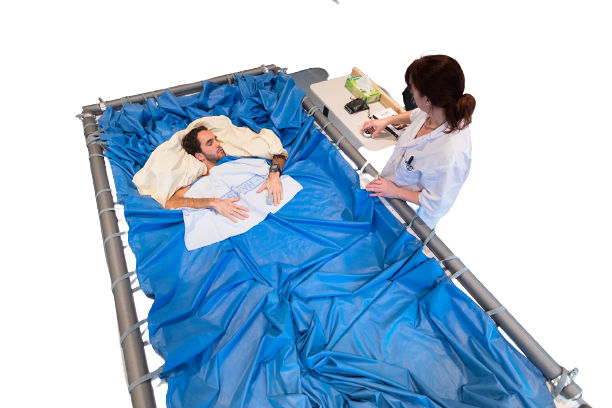
What is the dry immersion model?
Volunteers taking part in the study were placed in large bathtubs filled with warm water, but are insulated from it by a waterproof sheet attached to the edge of the bathtub. They were therefore surrounded by water and “floated” without any other supporting measure. This situation, interpreted by the organism as a complete lack of support, is very similar to that of microgravity.
The model thus makes it possible to quickly reproduce the effects of weightlessness on sensory-motor and cardiovascular systems.
Five days of immersion for space research
A first study was carried out in 2015 and a second in 2016-2017. In the first study the volunteers were “immersed for three days”. For the second study, the 20 volunteers were immersed for five days. The resulting physiological changes were then observed, recorded and analysed by nearly 10 scientific teams previously selected by CNES.
In particular, the aim of this new study was to get more in-depth knowledge of the physiological mechanisms involved and, in particular, to study the redistribution of body fluids caused by immersion and their repercussions on the brain and eyes.
The volunteers stayed at the clinic for 12 days for the study, divided up as follows:
- 4 days of pre-immersion for basic measurements to be taken
- 5 days of dry immersion
- 3 days of post-immersion to allow for post-immersion measurements and recovery
The 10 scientific teams studied the main physiological effects of five days of dry immersion and the impact of using thigh cuffs on the following systems:
- Ophthalmic system
- Muscular system
- Bone system
- Cardiovascular regulation
- Metabolism and gut flora
- Cognition
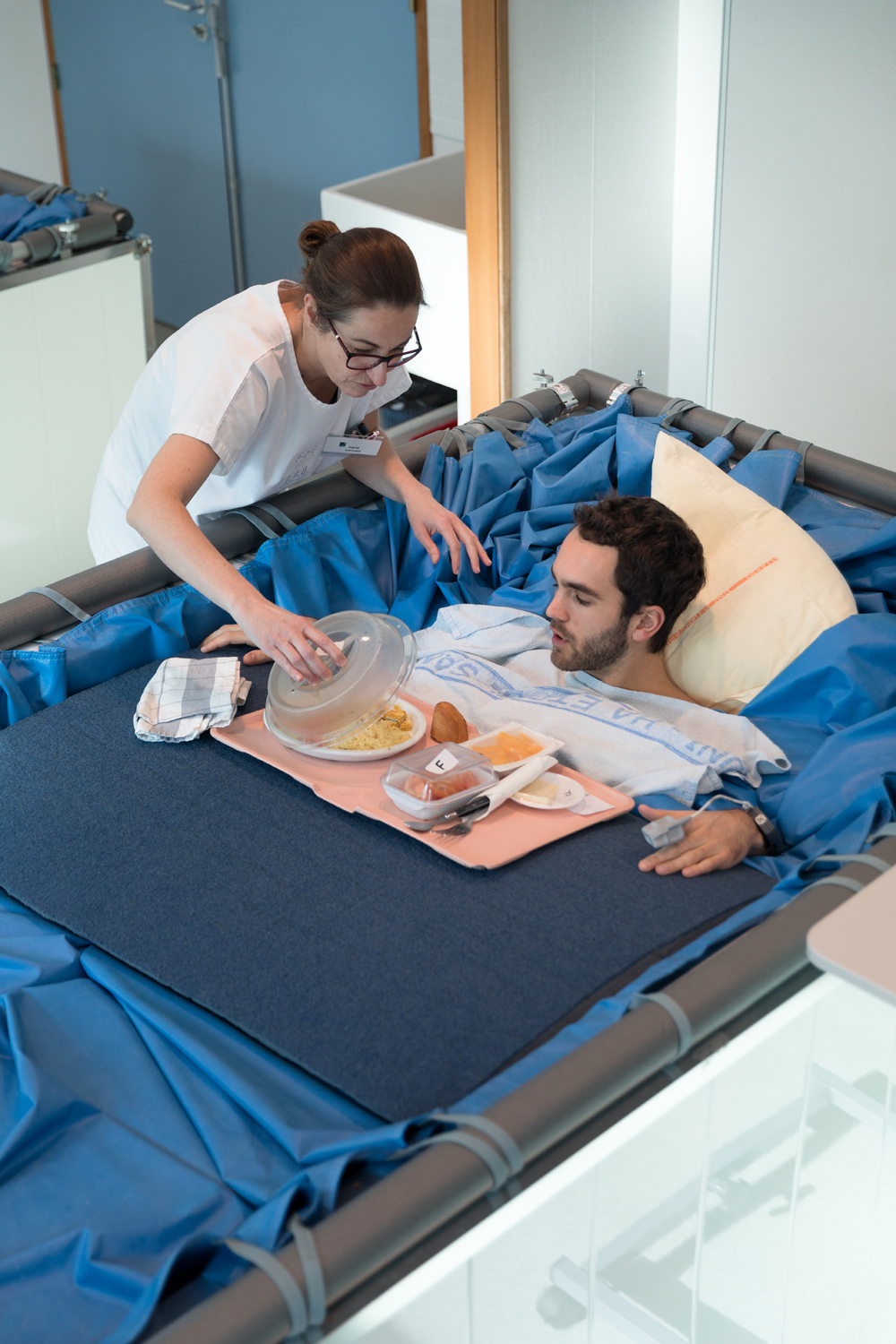
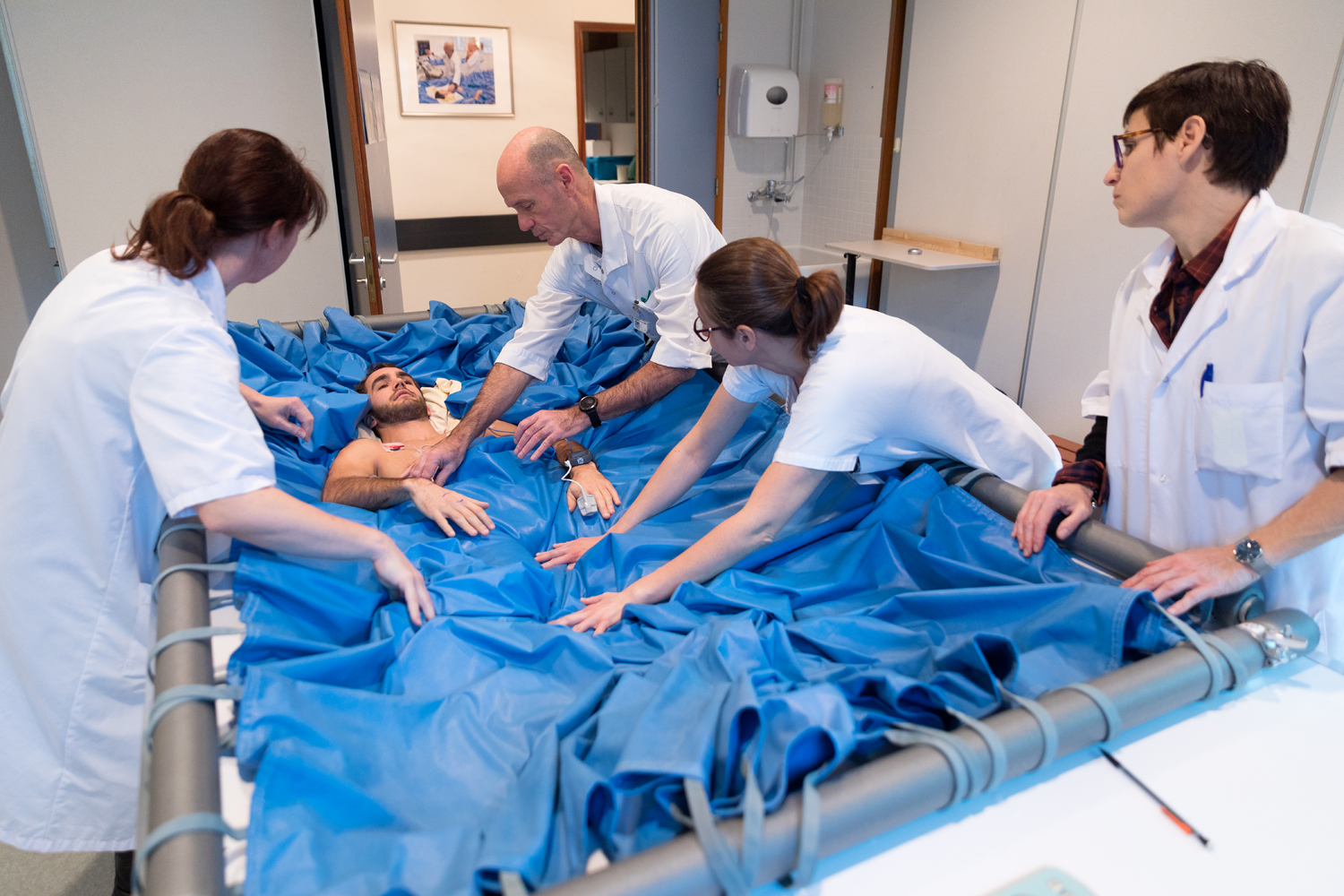
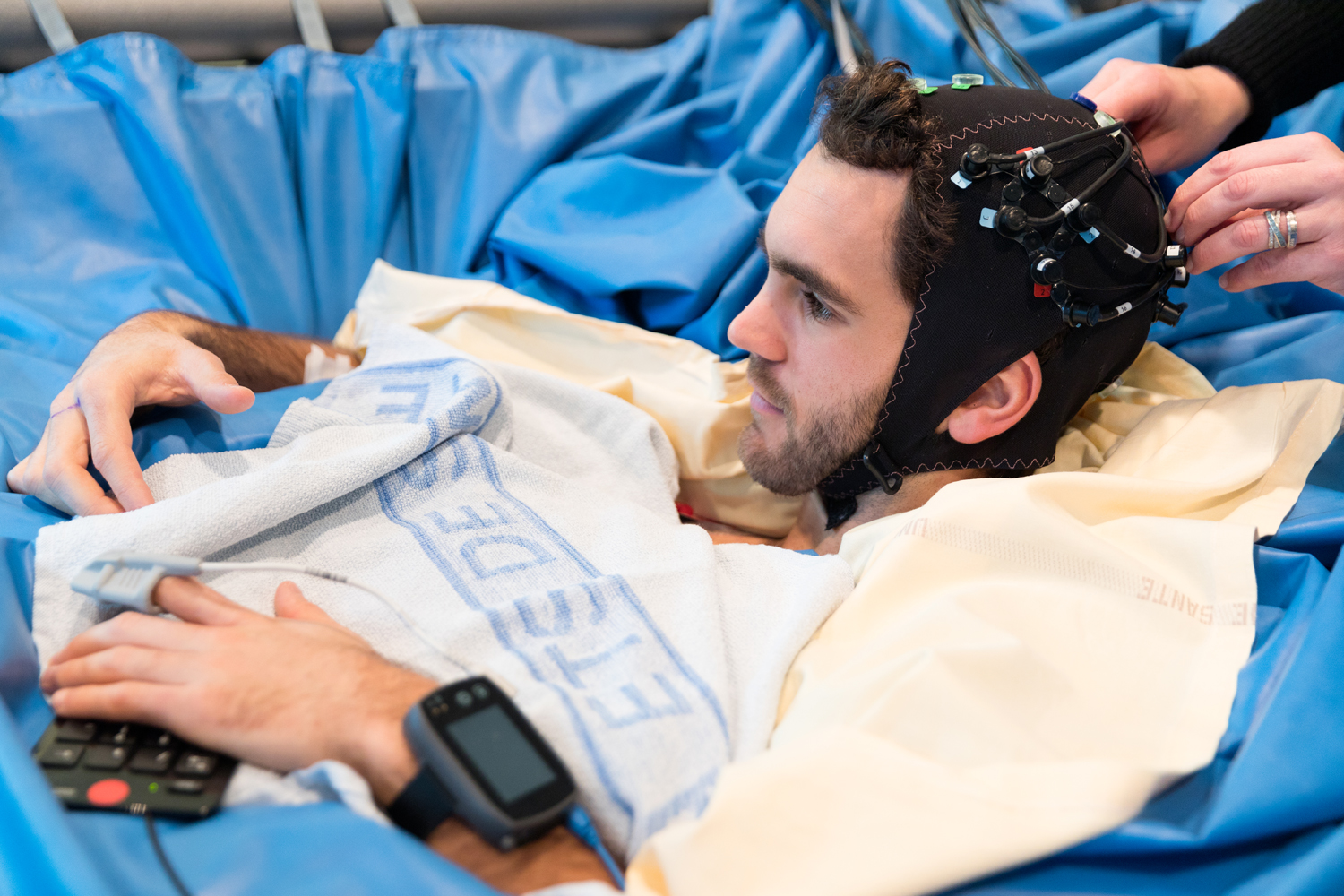
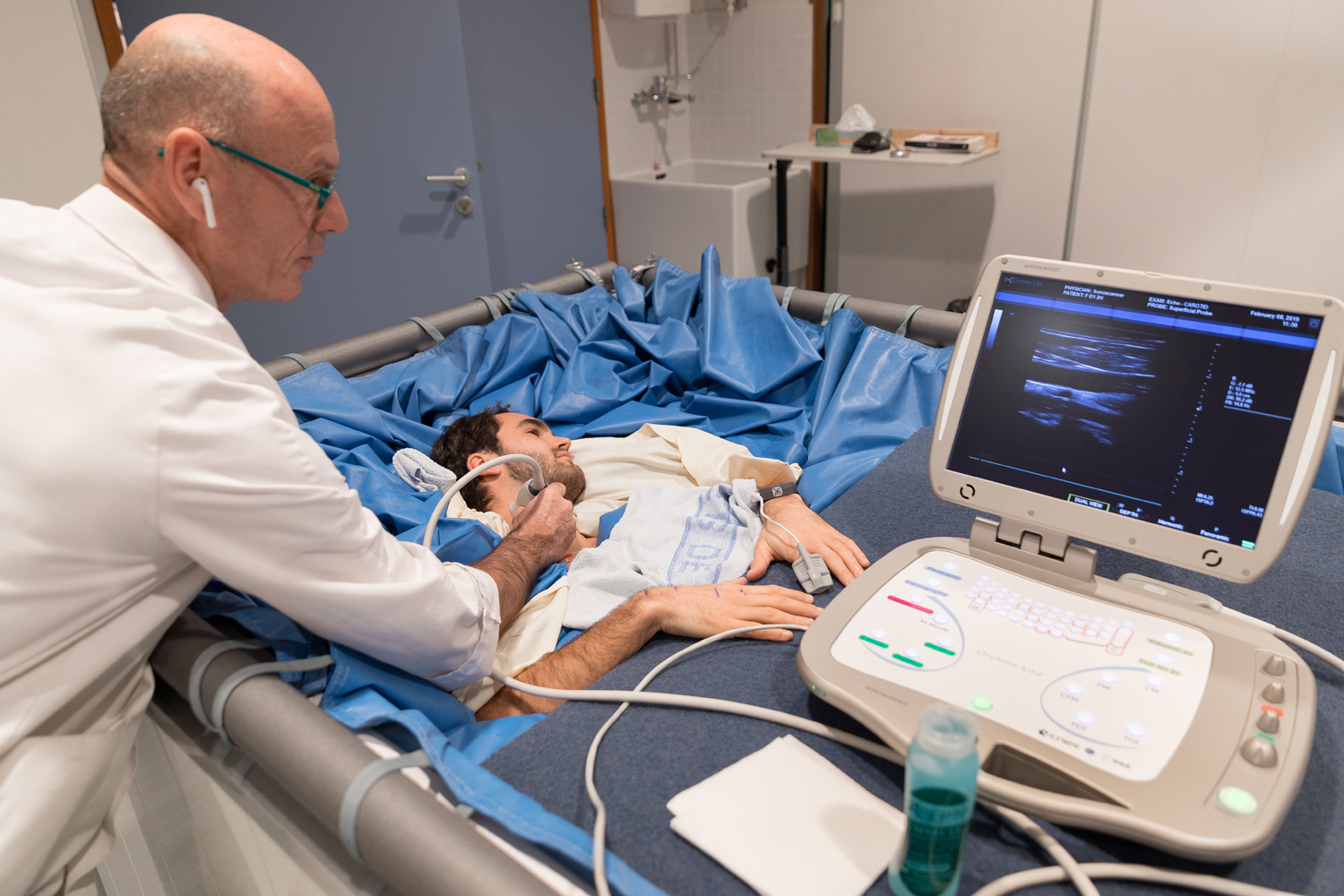
A new preventive method tested
The prevention method tested, called a countermeasure, was the use of venoconstrictive thigh cuffs.
These compression cuffs aim to reduce the influx of fluids to the upper part of the body, as occurs in microgravity, and should thus be able to reproduce the effect of gravity on the vascular system. This could reduce some of the negative effects of weightlessness on the body, particularly for the cardiovascular and ocular systems.
This countermeasure, if it proves effective, could easily be used by astronauts, especially as it has the enormous advantage of being particularly simple and easy to implement.
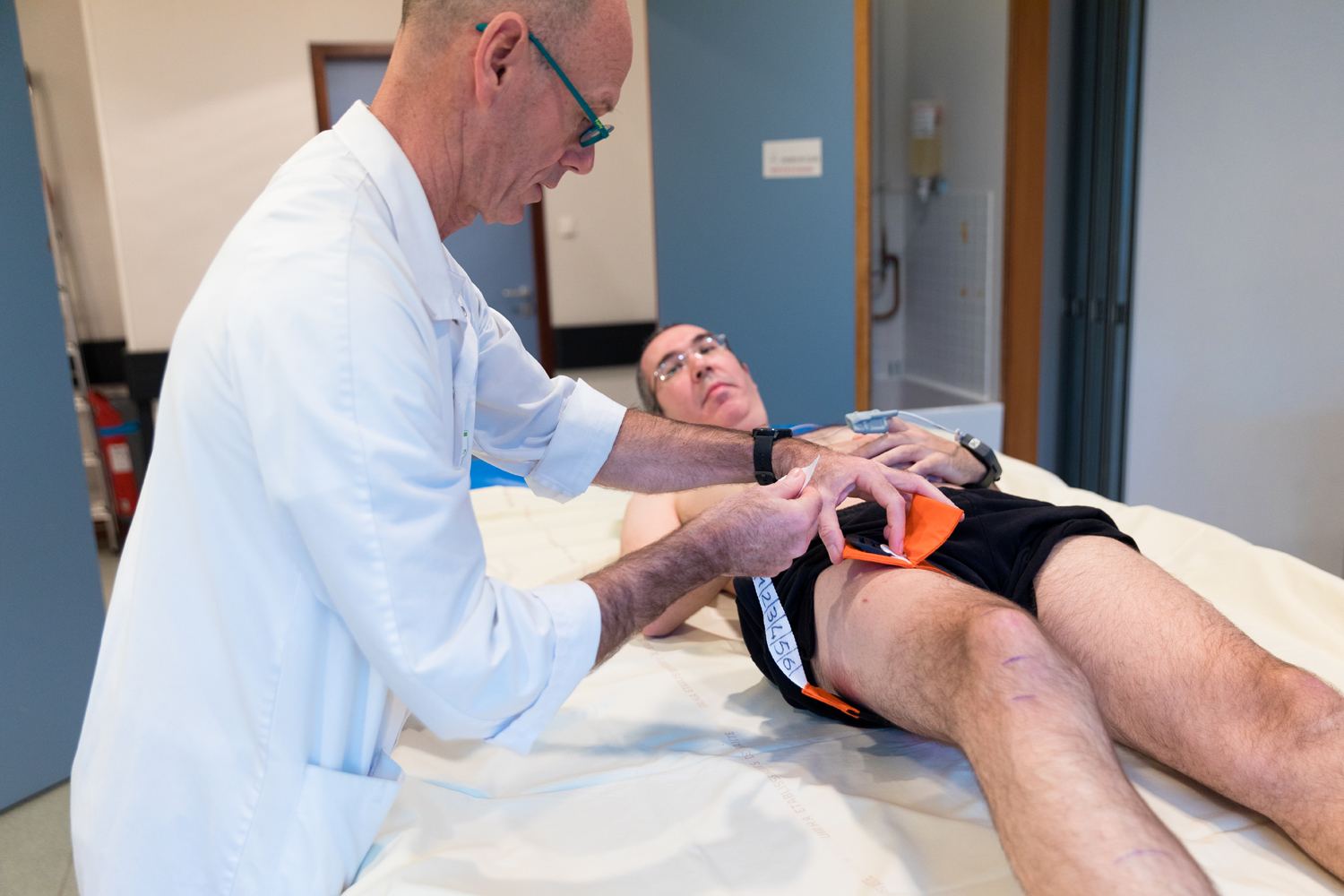
To find out more

Nos actualités
Nos projets
Une question ?
Devenir volontaire ?
Nos études cliniques
Urgent ! Recrutement volontaires
